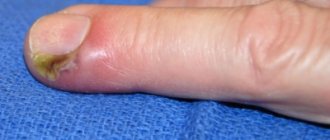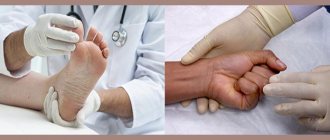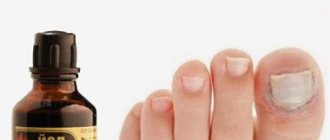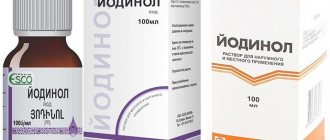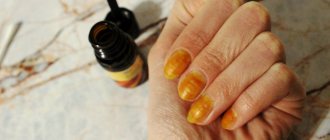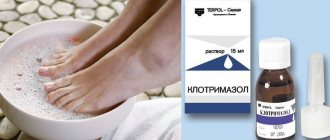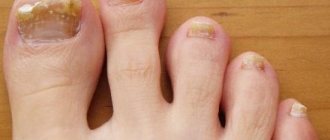Onychorrhexis (ICD code L 60.3) is a type of dystrophy of the nail plate in which it splits along the direction from the free edge to the growth zone. Occurs in women and men. Depending on the cause, onychorrhexis is observed only on one nail or on all of them at once. Cracks can be single or multiple, of different lengths and depths.
What causes?
The causes of onychorrhexis are divided into internal and external. When the body weakens, chronic pathologies, infections, the nail initially grows fragile. It cracks easily, delaminates, breaks off from the free edge. Due to impaired blood flow and chronic diseases, longitudinal splitting of the nail is often found in older people. The older the person, the higher the risks. Aging of the body is the most common reason.
Internal factors include:
- diabetes, thyrotoxicosis, cause metabolic disorders;
- atherosclerosis, lead to a decrease in the lumen of blood vessels, a decrease in blood flow, and the supply of nutrients;
- eczema, psoriasis, cause inflammation, disruption of the nail structure;
- autoimmune diseases (Raynaud's syndrome, vasculitis), damage the walls of blood vessels, nutrition of the matrix, reduce the strength of the resulting plate;
- lack of vitamins and minerals in the body due to malnutrition, eating disorders (anorexia, bulimia) or gastrointestinal diseases that interfere with the absorption of nutrients and change the chemical composition of the plate;
- fungal infection, provokes an inflammatory process, destroys the healthy structure of the nail;
- tumor diseases.
External factors can cause dystrophy:
- injuries received during a manicure or pedicure;
- household damage;
- working with cleaning agents and detergents without protective gloves;
- wearing shoes that don't fit;
- features of the profession: working at a computer with nails tapping on the keyboard, or playing the piano;
- continuous wearing of gel polish or artificial coverings;
- using acetone-based nail polish removers;
- habit of biting nails;
- frequent contact with water, alcohol, solvents, chemicals that dry out and damage the plate;
- Excessive length, improper cutting of nails.
In children, onychorrhexis is caused by trauma, decreased immunity, and previous infectious diseases.
How to fix a cracked nail at home
You can fix a cracked nail at home using a tea bag. Before doing this, make sure that the nail plate is degreased.
- Cut a rectangular patch from the tea bag that matches the size of the crack.
- Cover the crack with clear nail polish and apply a patch on top using tweezers or nail scissors.
- Give the first layer time to dry, then cover with the second to seal.
- To disguise the patch, use colored varnish.
Important
If the crack bleeds, dip your finger in a cold saline solution.
What are the symptoms?
The main sign is the presence of longitudinal cracks on the plate, running from the free edge to the center or base of the nail. They look like grooves or furrows. Depending on the cause, there may be one or several cracks, only on one finger or more. Onychorrhexis affects the fingernails and toenails, but is more common on the hands. On the feet, only the big toe is predominantly affected.
What onychorrhexis looks like is shown in the photo of the nail below:
In addition to longitudinal cracks, thinning of the plate, a change in color to yellowish or grayish, and an uneven laminated free edge are also possible. Due to increased fragility, longitudinal splitting is often combined with transverse splitting, which is called onychoschisis.
Vertical grooves on the nails, reminiscent of onychorrhexis, are characteristic of trachyonychia. And their treatment principles are similar. This is a type of onychodystrophy in which the nails become dull, rough, and covered with grooves and scales.
Reasons for the development of onychodystrophy
A longitudinal crack in a toenail can ruin the neatness of the entire pedicure. Unfortunately, very often it is not enough to just restore the beauty of the nail plate, because if you do not influence the cause of onychodystrophy, then there is a possibility that the process will worsen.
In order to completely get rid of this defect of the nail plate, the intervention of related specialists is often required.
The main causes of onychodystrophy:
Caused by endogenous (internal) factors:
- Lack of vitamins, minerals, micro- and macroelements;
- Congenital anomalies;
- Skin diseases (psoriasis, dermatitis, lichen planus, neurodermatitis, etc.);
- Endocrine pathologies (diabetes mellitus, hypothyroidism, hyperthyroidism, etc.);
- Malignant and benign neoplasms;
- Diseases of the heart and blood vessels;
- Reduced immune reactivity of the body;
- Pathologies of the gastrointestinal tract (ulcers, gastritis, etc.);
- Frequent stress;
- Lack of proper rest;
- Abnormalities in the blood picture (for example, iron deficiency anemia).
Caused by exogenous (external) factors:
- Fungal nail diseases;
- Bacterial lesions of the nail plate;
- Nail injuries;
- Improper care of nail plates;
- Rough, improper removal of gel polish;
- Using aggressive household chemicals in everyday life;
- Unbalanced diet;
- Low quality of drinking water;
- Adverse environmental impact;
- Exposure to ultraviolet radiation.
More often the phenomena of onychodystrophy are observed in women. This pathology in the fair sex manifests itself in increased fragility and lamination of the nail plate. Perhaps this is due to the not always high-quality service in beauty salons.
Men more often turn to specialists with fungal or bacterial nail infections.
In childhood, onychodystrophy most often appears due to trauma to the nail plate.
In order to establish the cause of onychodystrophy, you need to consult a podiatrist. The specialist will be able to diagnose the pathology, draw up a competent treatment plan, and also prescribe the necessary consultations with doctors of other profiles.
Symptoms of onychodystrophy
Depending on the cause of onychodystrophy, the disease can have different manifestations.
Congenital onychodystrophies:
- Onychomadesis is the separation of the nail from the skin at the points of its attachment to the skin folds.
- Koilonychia is a nail shape disorder in which the nail plate takes the shape of a saucer.
- Anochylia is the congenital absence of one or more nail plates.
- Platonychia is flattening and thickening of the nail plate.
- Micronychia is a pathology characterized by shortening of the nails.
- Hippocratic nails are a congenital enlargement of the nails, as well as an irregular shape of the nail plates.
Acquired onychodystrophies:
- Onychoschisis is a transverse division of the nail into several components.
- Onychorrhexis is the appearance of a crack along the nail without manifestation of an inflammatory reaction.
- Manicure onychodystrophy is the appearance of depressions on the nail from one edge to the other.
- Median canaliform onychodystrophy is the appearance of one median crack on the nail plate, from which smaller cracks extend.
- Onycholysis is the slow detachment of the nail from the nail bed with its complete preservation.
- Onychogryphosis is age-related changes in the nail, characterized by thickening and curvature.
- Leukonychia is a change in the color of the nails in the form of long white stripes.
- Hyperpigmentation is a change in the color of nails when taking medications, the appearance of subungual dystrophy or somatic pathologies.
- Scleronychia – increased hardness of the nail plates. Often found in endocrine diseases.
- Hapalonychia – extreme softness and pliability of the nail. Most often present in pathologies of the endocrine system.
- Trachyonychia - turbidity, roughness, separation of the nail plate. In most cases, it is a manifestation of immunodeficiency.
- “Thimblestone” onychodystrophy is the appearance of depressions on the surface of the nail. Most often it indicates the appearance of psoriasis.
Symptoms of onychodystrophy are varied. Therefore, in order to establish the true cause of the pathology, as well as find an effective method of treatment, you need to consult a podiatrist.
If you do not contact a specialist in a timely manner, as well as in the complete absence of treatment, the following complications may occur:
- Nail destruction (complete/partial);
- Attachment of a bacterial or fungal infection;
- Inflammation of the periungual fold;
- Progression of somatic pathology.
To avoid the development of complications, it is important to consult a specialist in a timely manner. Mikulo Natalya Valerievna is a podiatrist with extensive clinical experience. The specialist conducts an appointment at the address: Moscow, Konkovo st. Profsoyuznaya, building 109, shopping center “Seventy-seventh”.
Our advantages
Rare specialists in Russia
You can get tested in our clinic
Professional preparations
We are located next to the Konkovo metro station!
Why do adults and children develop cracks?
As a rule, onychorrhexis is not an independent disease. Most often, this is only a symptom of somatic pathology. Therefore, when longitudinal separation of the nail appears, qualified assistance is required not only from a podiatrist, but also from a therapist, endocrinologist, cardiologist or other specialists.
Each age may have its own reasons for the appearance of onychorrhexis. For example, in childhood, such a pathology can arise against the background of an irrational, unbalanced diet. The child’s body needs a large amount of vitamins, minerals, macro- and microelements - this is the key to the harmonious growth and timely development of the baby. If, for some reason, these “building materials” are not enough, then health problems of varying degrees and varying severity appear.
At a more mature age, onychorrhexis may appear for the following reasons:
Somatic diseases:
- Autoimmune diseases;
- Skin and venereological pathologies;
- Diseases of the gastrointestinal tract;
- Pathologies of the endocrine system;
- Vascular diseases;
- Mental disorders.
Other factors:
- Nail plate injuries;
- Frequent use of caustic household chemicals;
- Carrying out a manicure without understanding the structure of the nail plate;
- Viral and bacterial infections;
- Improper removal of gel polish;
- Unbalanced diet;
- Low quality of drinking water;
- Bad ecology.
Thus, when treating a cracked toenail , it is not enough to restore the aesthetics of the nail plate; it is equally important to identify and eliminate the factor that contributes to the formation of onychorrhexis.
Where to find a podologist in Moscow with extensive clinical experience? Mikulo Natalya Valerievna is a podiatrist with extensive experience. The specialist is accepted at the medical office, which is located at Moscow, Konkovo st. Profsoyuznaya, building 109, shopping center “Seventy-seventh”.
Treatment of cracked nail plates along and across
Treatment for a cracked toenail almost always requires an integrated approach to the problem. Unfortunately, correcting a defect only cosmetically is not always the right solution in this case. After all, external beauty can provoke the development of complications on the nail plate. Therefore, it is extremely important to find the cause of the cracked toenail and also eliminate it.
So, for example, if onychodystrophy is caused by somatic pathology, then to eliminate it requires consultation with related specialists - an endocrinologist, cardiologist, therapist, or others.
The elimination of deformations of the nail plates is carried out by a podiatrist. After collecting an anamnesis, examining the affected area and making a diagnosis, the doctor will make a diagnosis and also outline a rough treatment plan. In each specific case, the therapy program is compiled individually.
An approximate diagnosis plan for onychodystrophy includes the following points:
- Dermatoscopy;
- Sowing for fungal flora;
- Microscopy of scraping.
Main activities included in the treatment plan:
- Prescription of drugs. Most often this includes vitamin-mineral complexes, immunostimulants, and drugs that improve peripheral circulation. Sedatives are prescribed slightly less frequently.
- Physiotherapeutic treatment. This group of therapeutic effects can include hot baths with sea salt or essential oils. Paraffin therapy has a good effect.
- Massage.
- Treatment of nail plates using devices and local preparations.
- Use of keratolytic patches as prescribed by a doctor.
- Compliance with water regime, as well as a balanced diet.
- Consultation with doctors of other specialties (if necessary).
Diagnostics
If you find a plate splitting, contact a podiatrist or dermatologist to prevent the condition from getting worse. If left untreated, the crack will grow and reach the free edge. It will divide the nail into two halves and cause detachment from the bed. In addition, violation of the integrity of the plate opens access to pathogenic pathogens and often leads to bacterial or fungal infectious complications.
The specialist will examine the structure of the plate, assess the severity of the damage, suggest how to treat onychorrhexis of the fingernails or toenails, and how to improve their appearance.
To find out the cause, he will ask the patient about chronic diseases and prescribe additional examinations:
- examination of a nail scraping for fungus;
- general blood test, sugar test;
- consultation with an endocrinologist, gastroenterologist, vascular surgeon;
- microscopic examination;
- examination with a dermatoscope at 10x magnification.
How to stop a crack from growing
If a crack forms at the base of the nail or at one edge, take care to secure it to prevent it from extending all the way to the end, causing the nail to split.
To stop the development of cracks, standard medical glue BF-6 is used. It does not act aggressively on the crack, but helps to consolidate it and additionally disinfects the affected area.
However, girls often use varnish to repair damage, but this is not always resolved, due to the possibility of it flowing into the crack. Consider this factor, which depends on the type of crack. If there is a small, shallow chip, it is allowed to fix it with varnish.
How to treat?
To treat onychorrhexis, an integrated approach is used, aimed at eliminating the cause, normalizing metabolic processes, and strengthening the structure of the nails. If these conditions are met, treatment gives a good result. True, it takes up to six months, since the nail plate grows slowly, on average by 1 mm per week. The matrix where nails are formed is hidden under the skin of the lower roller, at a distance of 4 mm from the cuticle. It will take 4 weeks just to improve his condition, and to change the plate on his fingers it will take 4 to 6 months.
Treatment is selected depending on the severity of the injuries and the person’s health status. When identifying concomitant pathologies that cause longitudinal clefting, attention is paid to their treatment.
To strengthen nails the following is prescribed:
- massage;
- vitamins, amino acids, minerals;
- medicinal baths;
- drugs to strengthen the walls of blood vessels and improve blood circulation in the extremities;
- physiotherapy (paraffin therapy, ozokerite, mud masks).
Traditional methods and remedies for the treatment of onychorrhexis of nails include masks or baths with natural oils, oil solutions of vitamins, gelatin, as well as moisturizing and nourishing creams. They help strengthen nails and accelerate regeneration processes. But it is better to discuss the safety of their use with your doctor.
In case of deep, long cracks, the plate is reinforced with artificial materials to stabilize it.
Treatment of cracked nails
Lemon juice has a healing effect on nails
To keep your nails healthy, it is important to take care of them regularly. For this there are all kinds of medicinal varnishes, oils, vitamin baths . There are many nourishing and antibacterial products for nails, in particular for the treatment of cracks: Bepanten, Solcoseryl, Radevit or D-Panthenol.
A recipe based on olive oil and lemon juice if you rub this mixture in every day. Another healing remedy is a mixture of honey and glycerin with flour . This mask must be kept on for 20 minutes. Sea salt has strong regenerating properties .
If the breakage is only a one-time occurrence, it is enough to patch the crack and wait for the nail to recover.
Review your diet and give up bad habits. Consume more vitamins A, E, B, C. Add foods with calcium, iron and zinc to the menu. For complete absorption of calcium, the building material for nails, ensure adequate intake of vitamin D.
Care and prevention
When treating onychorrhexis, as well as for its prevention in the future, it is important to properly care for the nails, skin of the hands and feet.
What rules must be followed?
- Wash dishes and use any cleaning agents or detergents only with gloves.
- For manicure, choose high-quality varnishes with a harmless composition; do not use removers containing acetone to remove nail polish.
- Avoid frequent contact with water.
- When treating onychorrhexis, it is not recommended to do a manicure or apply any coatings to the nails other than those prescribed by the doctor. In the future, take breaks from wearing gel polish and artificial nails.
- Take care of your drinking regime and a nutritious diet, including fruits, vegetables, and low-fat protein foods.
- Do not grow your nails too long; periodically get medical manicures and pedicures at podiatry centers.
- Massage your hands and feet daily, moisturize the skin on your arms and legs with nourishing creams.
As a rule, onychorrhexis does not cause pain or inflammation, but you still need to go to a podiatrist with this problem. The specialist will prescribe the correct treatment, which will speed up the recovery of the nail and prevent the development of complications. He will also tell you about the rules of care at home so that splitting or splitting of nails no longer bothers you.
17 1
Origin and types of cracks
Normally, the surface of the nails is flesh-pink in color with an even texture. The location of the damage to the plate will help the specialist determine the causes of cracks in the fingernails and prescribe treatment so that a small problem does not develop into big troubles.
Types of cracking
Do not confuse cracking with natural or acquired unevenness of the plate. Cracks appear when the integrity of the nail is damaged. They are:
- multiple or single;
- on the internal or external surface;
- transverse or longitudinal.
Quite often, the nail plate on the hands cracks along the regrown edge, the free area of the extended plate. This happens due to everyday negligence of the owner of long nails: peeling vegetables, mechanical stress during cleaning and other factors. The manicure, of course, will have to be adjusted, but there is no danger here (unless the plate has moved away from the soft tissues).
Causes for concern
The following situations have a pathological origin:
- nail growing with a crack;
- cracks extending to the nail bed and surrounding tissues;
- multiple injuries or if the nail cracks along the plate : this cannot be done treatment
Transverse abnormalities appear due to inflammation of the nail plate, injury or infection during manicure. For the same reasons, marks and cracking appear on the inside of the nail. Longitudinal cracks are signs of problems in the body.
What to do if your nails peel and break: treatment and manicure
General recommendations are for everyone, regardless of what caused the splitting and brittleness of your nails.
If the reason is a violation of nail treatment technology, we recommend that you carefully read the following articles:
- How to do a European manicure.
- How to do a trim manicure and care for the cuticle.
- How to do a hardware manicure. Description of the procedure.
- How to choose wire cutters.
- How to choose a file.
We recommend choosing a crystal or laser file. Laser and crystal files are the most delicate tools that can be used to “solder” peeled nail flakes. You need to file the nail in the direction from the edges to the center and from the tip to the base. Sand only dry, unpainted nails.
Check the quality of polishing using nylon tights. Run your nail along them: it should glide smoothly and not catch on the threads.
Sand any imperfections as soon as you find them. File the tip of the nail as soon as it breaks. Before treatment, wipe the nail with an antiseptic. If your nail is damaged by an infection (fungus, eczema), sterilize the file in a special solution after each use. Please note that in such cases, sandpaper files are not sterilized, but thrown away. To save money, it is wiser to purchase glass or crystal, which can be disinfected and washed.
Do not polish your nails for more than 2 minutes: there is a risk of thinning the nail plate.
Application of "Biogel"
What product should I use to strengthen my nails? If they grow too slowly, you can increase them using gel or acrylic, but you need to be aware of the negative side effect. Dense acrylic and gel layers make it difficult for useful elements to reach native nails. During such procedures, the nail plates are significantly damaged.
With the help of "Biogel" you can strengthen your nails. Applying strengthening nail polish is very easy. A professional composition and an ultraviolet lamp are enough to carry out the manipulation. Thanks to the varnish, you can protect your nails from brittleness and peeling. Using a special solution, you can wash off “Biogel” without any problems.
Primary measures for nail injury
Help for the victim must be provided as quickly as possible. The result of treatment and the speed of recovery will depend on its timeliness.
Necessary:
- remove all jewelry from fingers;
- stop bleeding if it occurs: place the wounded finger under cold water;
- moisten a piece of clean cloth, a cotton pad, a bandage with chlorhexidine or a solution of hydrogen peroxide and press it to the wound;
- if possible, apply ice to the injured finger - this will prevent swelling from developing and will calm the pain;
- to reduce pain, the injured limb is held above the level of the heart;
- after the bleeding has stopped, disinfection is carried out using iodine (only the edges of the wound are treated);
- if swelling appears, you can apply an iodine mesh to your finger;
- if the pain does not subside, you should take analgin or ibuprofen;
- Apply a sterile bandage to the wound.
Painkillers
If the patient experiences unbearable pain as a crack occurs on the nail plate, it is necessary to take a painkiller. Thanks to Ibuprofen, Diclofenac, Aspirin, Indomethacin, Meloxicam, the patient’s well-being can be improved. Such drugs will help not only eliminate pain, but also overcome severe inflammation. Doctors say that Ibuprofen is one of the most potent medications that does not cause side effects. Among the most powerful analgesics are Morphine, Fentanyl, Methadone, Codeine, and Tramadol. These drugs are used only if unbearable pain occurs. Medicines are sold in pharmacies with a doctor's prescription.
